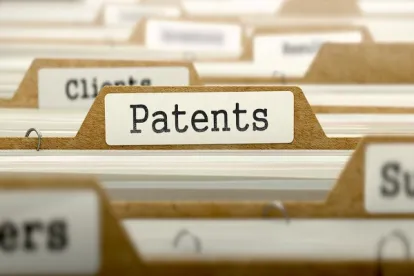On March 21, 2017, in SCA Hygiene Products Aktiebolag v. First Quality Baby Products, LLC, No. 15–927, a seven-to-one majority of the Supreme Court held that laches is not a defense to claims for damages arising from patent infringement allegedly occurring within the Patent Act’s six-year limitations period (35 U.S.C. § 286). In so holding, the Supreme Court refused to create a special rule for patent cases, instead bringing patent law into conformity with the law of copyrights and other areas where laches cannot be used to bar claims for legal relief brought within a statutory limitations period enacted by Congress. The Supreme Court’s decision eliminates the laches defense to damages claims that had existed in patent law for decades, and will result in patent owners being able to assert patents in litigation many years after an accused infringer develops and first markets an accused product, subject only to the six-year look back period from the date of filing of the lawsuit. Laches, however, will remain available as a potential defense to claims for equitable relief.
The dispute between SCA and First Quality began in 2003, when SCA asserted that First Quality’s adult incontinence products infringed SCA’s patent. First Quality denied the allegations, and asserted that its patent predated SCA’s asserted patent, thereby rendering SCA’s patent invalid. In 2004, SCA sought reexamination of its patent by the U.S. Patent and Trademark Office (the “PTO”). In 2007, the PTO confirmed the validity of SCA’s patent, and SCA then sued First Quality for patent infringement in 2010.
First Quality won summary judgment that SCA’s claim for damages was barred by laches because SCA had unreasonably delayed filing its lawsuit. During the pendency of SCA’s appeal to the Federal Circuit, the Supreme Court held in Petrella v. Metro-Goldwyn-Mayer, Inc. 572 U.S. ___ (2014) that laches was not available as a defense against claims for damages for copyright infringement occurring within the Copyright Act’s three-year statute of limitations (15 U.S.C. § 507(b)). The Supreme Court in Petrella explained that laches did not apply to claims for legal relief where Congress had enacted a statute of limitations. Nonetheless, in 2015, the Federal Circuit sitting en banc affirmed the district court’s summary judgment decision, holding that laches did apply to the six-year limitations period in § 286 because § 282 of the Patent Act codified laches as a defense. See SCA Hygiene Prods. Aktiebolag v. First Quality Baby Prods., LLC, 807 F.3d 1311 (Fed. Cir. 2015) (en banc). On May 2, 2016, the Supreme Court granted SCA’s petition for a writ of certiorari. This case garnered significant attention in the industry and the Court received numerous briefs from amici curiae of interested industry groups and participants, including an amicus curiae brief filed by the authors of this article.
By way of background, the predecessor to § 286 of the Patent Act (as with the Copyright Act) did not contain a limitations period. Thus, to prevent patent owners from bringing claims after an unreasonable delay, equity courts borrowed laches periods from analogous state-law causes of action. However, these laches periods varied from state to state. Accordingly, in 1896, Congress adopted a uniform limitations period of six years.
In SCA Hygiene, the Supreme Court held that, by enacting a limitations period, Congress manifested its judgment as to a reasonable period of time within which a party could pursue recovery of damages for patent infringement, effectively building into the statute its own laches determination, and thereby making judicially created laches unnecessary:
The enactment of a statute of limitations necessarily reflects a congressional decision that the timeliness of covered claims is better judged on the basis of a generally hard and fast rule rather than the sort of case-specific judicial determination that occurs when a laches defense is asserted. Therefore, applying laches within a limitations period specified by Congress would give judges a ‘legislation-overriding’ role that is beyond the Judiciary’s power. (quoting Patrella, 572 U.S. at __ ).
Slip op. at 4.
The Supreme Court went on to hold that “[a]pplying laches within the limitations period would also clash with the purpose for which the defense developed in the equity courts,” i.e., determining whether a plaintiff brought its claim with unreasonable delay in cases where “the Legislature has provided no fixed time limitation.” Id. at 5.
Accordingly, the Supreme Court reversed the Federal Circuit, holding that, “[b]y logic of Petrella, we infer that [§ 286 of the Patent Act] represents a judgment by Congress that a patentee may recover damages for any infringement committed within six years of the filing of the claim.” Id. at 6.
The Supreme Court’s decision in SCA Hygiene is a win for patent owners, including small and independent inventors, who may lack the resources to constantly monitor the marketplace for potential infringement. The additional time it may take these patent owners to investigate infringing activity and/or secure litigation funding before bringing a lawsuit will no longer foreclose their ability to recover damages within the six-year statute of limitations.
However, patent owners should not interpret the Supreme Court’s decision as an invitation to delay suing in order to increase the amount of their potential recovery. As the Supreme Court held, defendants can still raise the defense of equitable estoppel in patent infringement lawsuits, which could foreclose the recovery of damages for infringement. Moreover, laches remains a potential defense to claims for equitable relief.
In sum, the Supreme Court’s decision in SCA Hygiene, coupled with its decision in Petrella, brings greater certainty to damages in patent and copyright cases, respectively: Laches cannot preclude damages for infringement occurring within the statutory limitations period.







 />i
/>i
